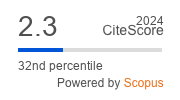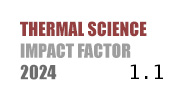THERMAL SCIENCE
International Scientific Journal
Authors of this Paper
External Links
EQUIVALENT VERIFICATION METHOD FOR EXTREME HYPOTHERMIC ENVIRONMENT ADAPTABILITY OF LUNAR POLAR DRILL BIT CUTTING TOOLS
ABSTRACT
Aiming at the problems of high cost and great difficulty in verifying the performance of the drill bit cutting tools in the extreme hypothermic environment (20-40 K) of the lunar polar regions, this paper proposes an equivalent verification method based on the liquid nitrogen temperature range (-180°C). Through a systematic analysis of the influence mechanism of extremely low temperature on the mechanical properties of lunar regolith and the performance of drill bit materials, the stable threshold of the strength of the frozen soil working condition changing with temperature is determined, and the key risk of the increase in internal stress caused by the thermo-mechanical coupling deformation of the drill bit is revealed. Based on the equivalent principle of material impact work and the compensation strategy for thermal stress increment, an equivalent verification theoretical framework with the core of kinetic energy proportional scaling and external load superposition is constructed, and a multi-dimensional test matrix covering the working conditions of dry soil and frozen soil is designed. The research results show that, by optimizing the driving parameters of the drilling tool and the load conditions, this method can effectively simulate the mechanical impact and structural stress effects of the extreme hypothermic environment on the cutting tools, providing an innovative solution for the low cost and high efficiency verification of the reliability of drilling tools.
KEYWORDS
PAPER SUBMITTED: 2024-11-24
PAPER REVISED: 2024-11-30
PAPER ACCEPTED: 2024-12-11
PUBLISHED ONLINE: 2025-06-01
DOI REFERENCE: https://doi.org/10.2298/TSCI2502223M
CITATION EXPORT: view in browser or download as text file
2025 Society of Thermal Engineers of Serbia. Published by the Vinča Institute of Nuclear Sciences, National Institute of the Republic of Serbia, Belgrade, Serbia. This article is an open access article distributed under the terms and conditions of the Creative Commons Attribution-NonCommercial-NoDerivs 4.0 International licence

